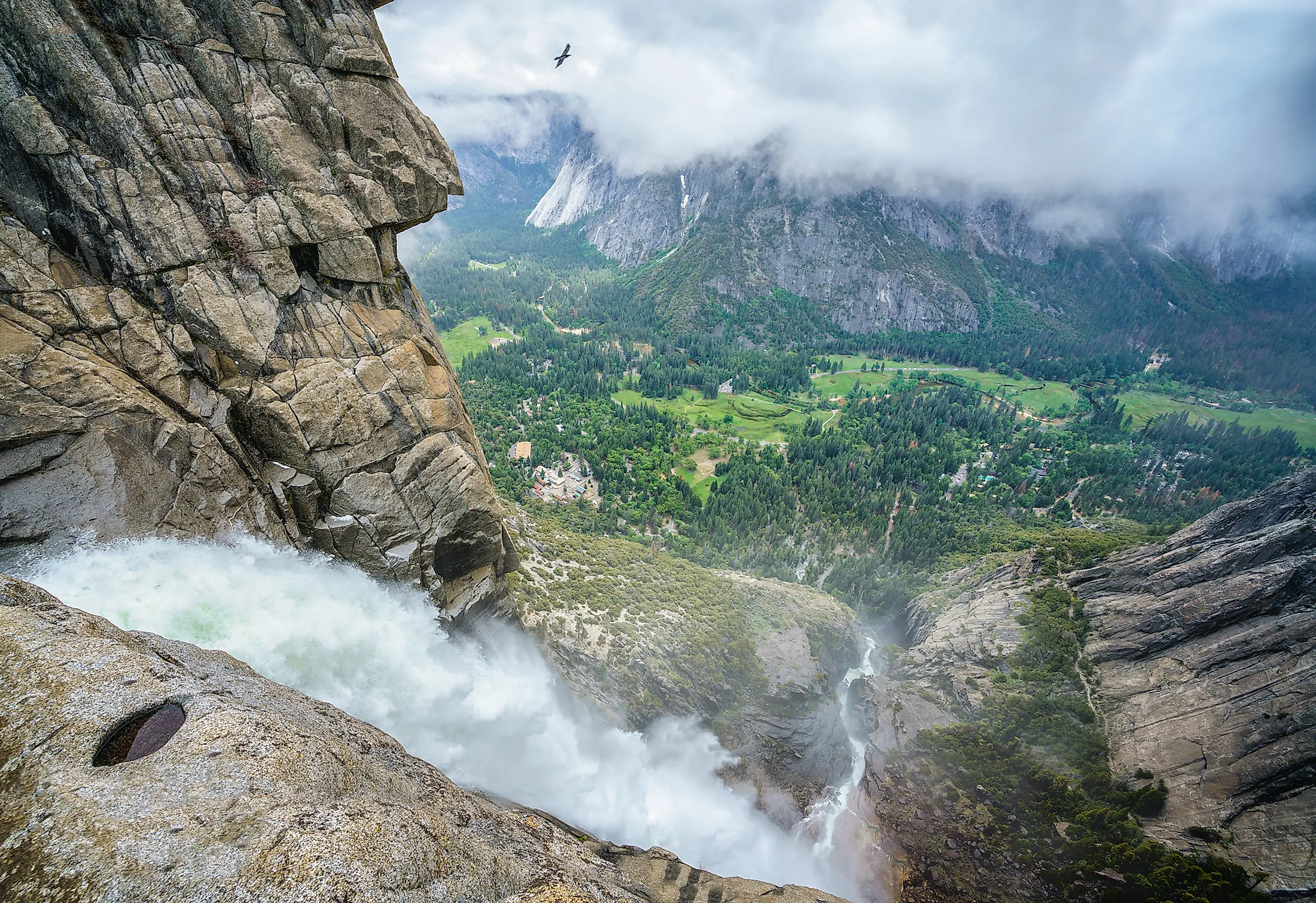
Yosemite Valley
Yosemite Valley is a natural U-shaped valley in Yosemite National Park, located on the western hill of the Sierra Nevada Mountains in California, U.S. Yosemite Valley is home to most of the park's famous cliff and waterfall. The park was selected as a UNESCO World Heritage site in 1984. Ice depth in Yosemite Valley may have reached 4,000 feet in the early glacial times, where the declination of the ice formations cut and sculpted the Valley that attracts so many visitors to its scenic vistas today. Several of the largest bare granite monoliths on earth are located in Yosemite Valley.
Topography And Climate Of Yosemite Valley
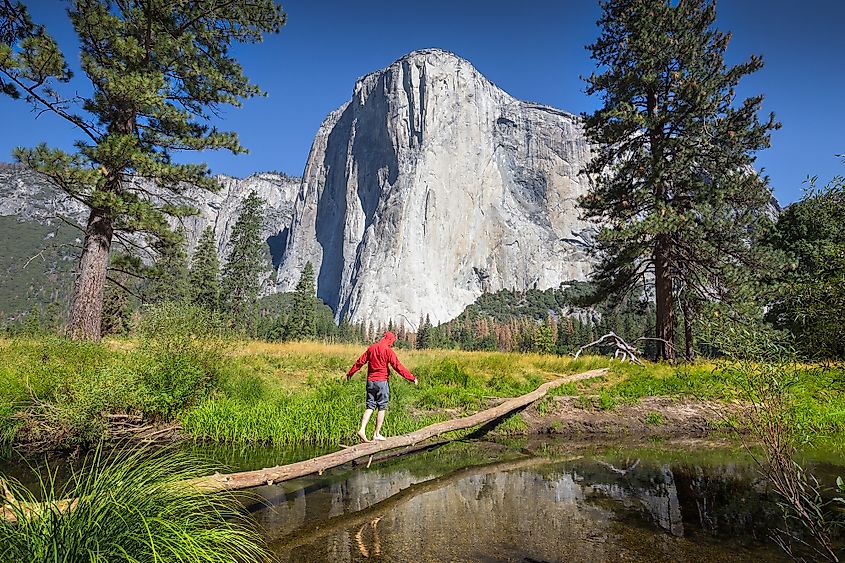
Located on the western hill of the Siera Nevada mountains, Yosemite Valley was formed by a Glaciation event that has sculpted a deep U-shaped valley, which curves in a gentle arc about 7 miles and between 0.5 and 1 mile wide. The Valley features several attractions, such as sheer rock walls that rise 3,000 to 4,000 feet above the valley floor, Yosemite Falls, and a variety of huge domes and peaks. The highest of these domes is El Capitan, a granite rock located by the western end of the Valley, rising at 7,569 feet above sea level and mounting at 3,600 feet above the Valley. Moreover, the Half Dome overlooks the Valley, reaching 8,836 feet and providing an impressive view from its summit.
Yosemite's climate is strongly influenced by elevation and by the mountainous structures. Summers are hot, with temperatures often reaching or exceeding 32 °C in the Valley, and afternoon thunderstorms can happen, specifically at higher elevations. Winters are cold and snowy, where temperatures at higher summits typically remain below zero. Rainfall is temperately high and frequently falls as snow during the winter.
Brief History Of The Yosemite Valley
Yosemite National Park, the home to Yosemite Valley, has been inhabited for nearly 4,000 years. However, humans may have first visited the area even earlier, as long as 8,000 to 10,000 years ago. The park was discovered by European American settlers in 1851 through James D. Savage Settlers started following, including business tycoons who built accommodations for tourists, who were urged to visit after the spread of paintings and photographs by artists such as Thomas Hill and Carleton E. Watkins. Worries about the deprivation of the natural environment due to the flood of people visiting the area soon arose. It led to calls for the federal government to guard Yosemite Valley and the Mariposa Grove, which happened by allowing the launch of a state park there in 1864. In 1890 the U.S. Congress reserved land around the state park as Yosemite National Park. In 1906, the state parkland was combined with the national park. Other spots of land were later added until the park stretched to its current size.
Habitats And Biodiversity In Yosemite Valley
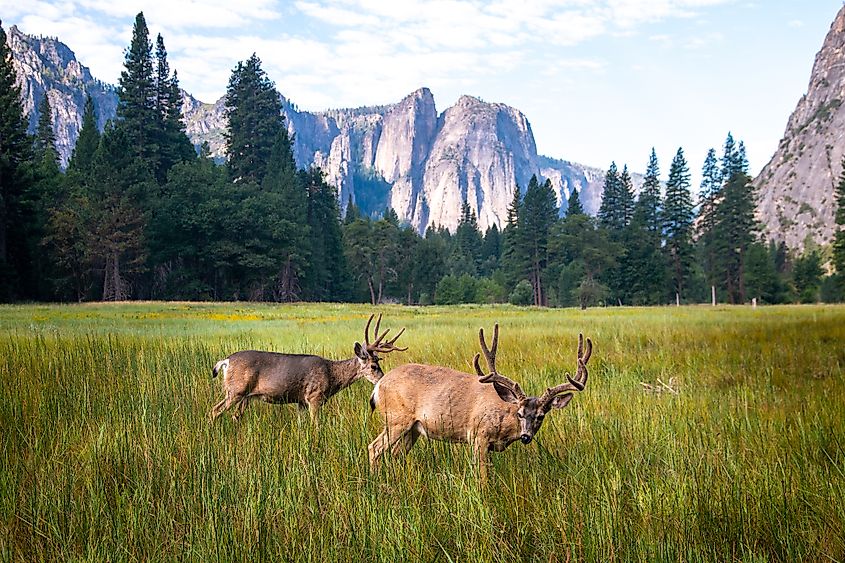
Yosemite Valley inhabitants are species that survive in the meadow environment, with the border between meadow and forest preferred by many animal species because of the closeness of open areas for scavenging and shelter for protection. Wildlife like black bears, coyotes, Sierra Nevada Bighorn Sheep, and Mule Deer are mostly spotted in the Valley.
Yosemite Valley grows a large series of coniferous trees that include groves of big trees, such as the giant sequoias at the Mariposa Grove in the southern area of the park, while mountain hemlocks and lodgepole pines grow closer to the timberline overlooking the Valley.
Yosemite Valley Attractions
Yosemite Falls: Yosemite Falls, the highest waterfall in Yosemite National Park, is a key attraction in the park. It has its highest water flow in spring which is the best season to visit the falls.
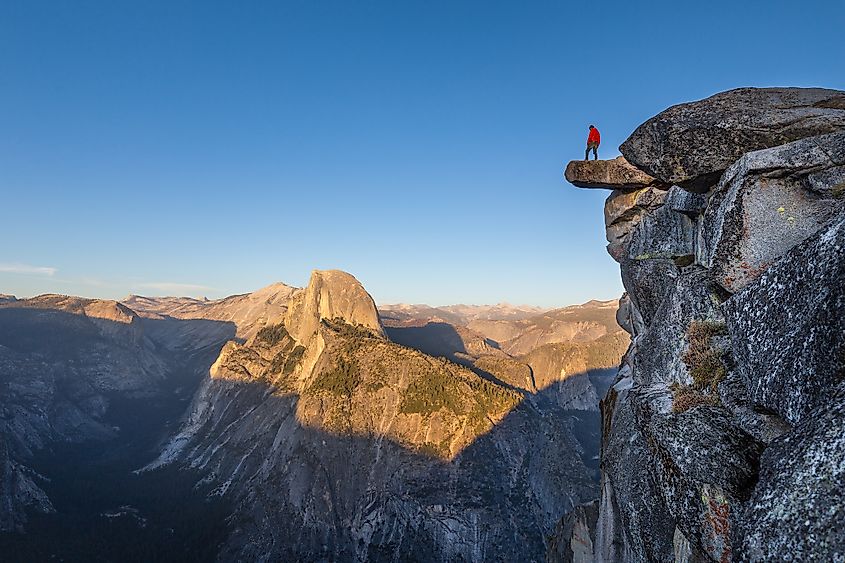
Glacier Point: Standing at 3,214 feet above the valley floor and 7,214 feet above sea level, visitors can steep the panoramic view from Glacier Point display Yosemite Valley, Half Dome, and three waterfalls. The area is reachable through a short, easy hike and offers gasp-inducing views.
El Capitan: El Capitan is a huge granite cliff that looks over Yosemite Valley. It is considered one of the most popular natural rock-climbing structures globally due to its diverse range of climbing roads and its accessibility all year round. The cliff was named "El Capitan" by the Mariposa Battalion when they discovered the Valley in 1851.
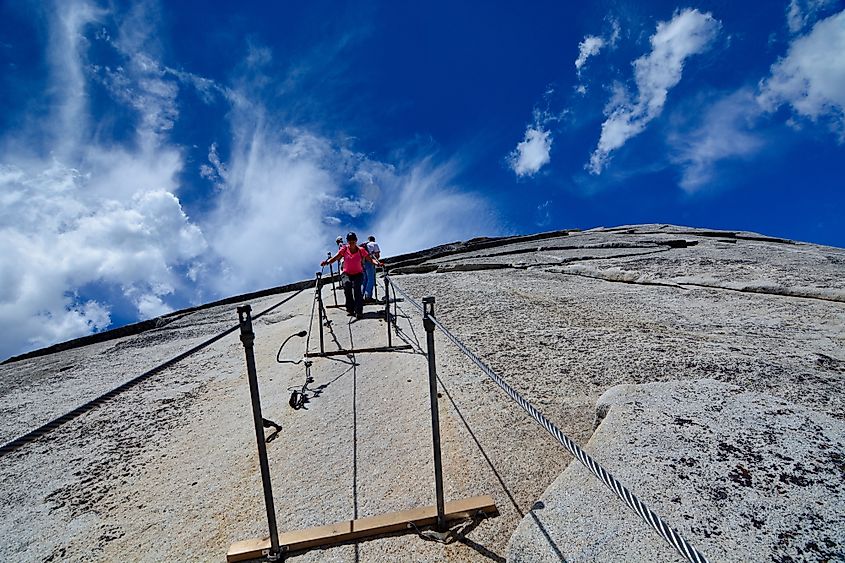
Moreover, the Valley offers a variety of Granite domes, such as Sentinel Dome rising at 3000 feet and Half Dome peaking at 4,800 feet above the valley ground. Besides, a major attraction in the Valley is the Tunnel View, which is the first view of the Valley and is widely captured through photos, especially during sunrise and sunset.
Although Yosemite Valley represents only one percent of the Yosemite National Park area, it is where most visitors come to stay. The Valley is well known for its waterfalls and the rainbows that can appear in them, in addition to its lunar rainbows or moonbows, which are created when a waterfall's mist merges with bright moonlight. It happens in the spring and early summer when the sky is clear, and the moon is full. For those who are of the adventurous kind or just appreciate the outdoors sensation, Yosemite National Park is one of the best trips that can be taken, with activities and events happening all year round, such as hiking, skiing, camping, and many more.











